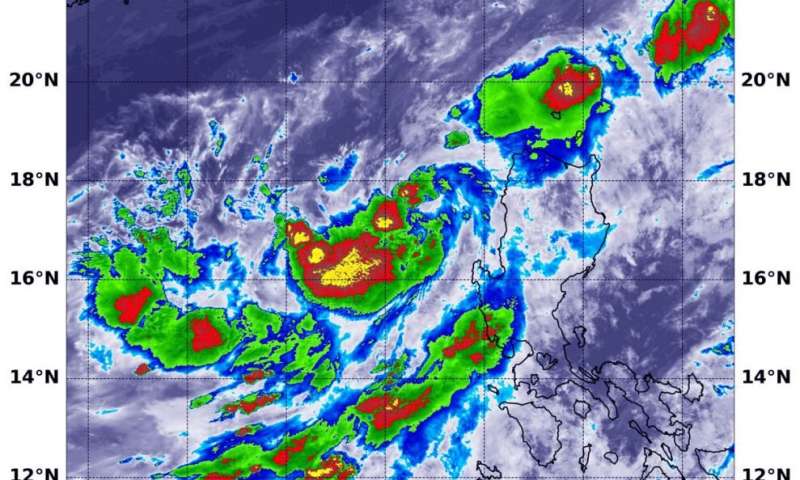#NASA finds strong storms in developing Tropical Storm Mekkhala
“#NASA finds strong storms in developing Tropical Storm Mekkhala”

After Tropical Depression 07W formed close to the western Philippines, it moved away and strengthened into a tropical storm in the South China Sea. NASA’s Terra satellite provided a look at the strength of the storms that make up the tropical cyclone.
On Aug. 9 at 11 p.m. EDT (Aug. 10 at 0300 UTC), Tropical Depression 07W formed near latitude 16.8 degrees north and longitude 118.3 degrees east, about 204 nautical miles northwest of Manila, Philippines.
When it formed it was close enough to the Philippines to generate warnings. Tropical cyclone wind signal #1 was posted for western portions of Ilocos Norte and Sur, La Union, western parts of Pangasinan, and northern part of Zambales. Those warnings were dropped by Aug. 10 as the system moved west and away from the Philippines.
Infrared imagery gathered on Aug. 9 at 10:20 a.m. EDT (1420 UTC) was from the Moderate Resolution Imaging Spectroradiometer or MODIS instrument. MODIS flies aboard NASA’s Terra satellite. MODIS gathered temperature information about 07W’s cloud tops. Infrared data provides temperature information, and the strongest thunderstorms that reach high into the atmosphere have the coldest cloud top temperatures.
MODIS found the most powerful thunderstorms were around the center of circulation, and several other areas around the center where temperatures were as cold as or colder than minus 80 degrees Fahrenheit (minus 62.2 Celsius). Those areas were surrounded by thunderstorms slightly less high in the atmosphere, but still powerful rainmakers with cloud top temperatures as cold as or colder than minus 70 degrees Fahrenheit (minus 56.6 Celsius). Cloud top temperatures that cold indicate strong storms with the potential to generate heavy rainfall.
Tropical Depression 07W became a tropical storm at 5 a.m. EDT (0900 UTC) on Aug, 10 and was renamed Tropical Storm Mekkhala. Mekkhala is known locally in the Philippines as Ferdie. The storm’s maximum sustained winds had increased to 35 knots (40 mph). It was centered near latitude 20.2 degrees north and longitude 118.7 degrees east, about 332 nautical miles south-southwest of Taipei, Taiwan. Mekkhala was moving to the north.
The Joint Typhoon Warning Center expects that Mekkhala will continue to move north before moving ashore in southern China.
Tropical cyclones/hurricanes are the most powerful weather events on Earth. NASA’s expertise in space and scientific exploration contributes to essential services provided to the American people by other federal agencies, such as hurricane weather forecasting.
Citation:
NASA finds strong storms in developing Tropical Storm Mekkhala (2020, August 10)
retrieved 10 August 2020
from https://phys.org/news/2020-08-nasa-strong-storms-tropical-storm.html
This document is subject to copyright. Apart from any fair dealing for the purpose of private study or research, no
part may be reproduced without the written permission. The content is provided for information purposes only.
If you want to read more Like this articles, you can visit our Science category.
if you want to watch Movies or Tv Shows go to Dizi.BuradaBiliyorum.Com for forums sites go to Forum.BuradaBiliyorum.Com



